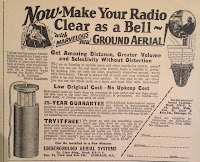Here all Copernicus's pains,
The labour of great Newton's brains,
What puzzled ages - one short view
(Each knowledge of the mind) can shew.
Inigo Jones with envious eyes
Might see the finished orders rise;
Raphael, outdone, behold, with grief,
The painted figures spring to life.
The description of painted figures springing to life was intriguing. After a bit of research, I discovered that the Microcosm in question referred to an automaton, one of the clockwork machines that became popular in the 17th and 18th centuries. From the Greek meaning 'to act of one's own will', automata enchanted the courts of Europe, with their lifelike movements and musical chimes. During the French Revolution, they were so much associated with the ruling classes that revolutionaries likened them to the wealthy elites, 'bodies without souls, covered in lace'.
However, automata were sometimes exhibited to wider audiences for publicity purposes, hence the poem's full title of On Seeing the Microcosm, Now Exhibiting in the Red Lion Assembly Room, which originally appeared in Swinney's Birmingham and Stafford Chronicle. This particular automaton was credited to the British goldsmith James Cox, who was best known for producing mechanical clocks.
Along with Belgian inventor John Joseph Merlin, Cox was also the creator of the famous Silver Swan, now the star attraction of the Bowes Museum at Barnard Castle. Mark Twain describes his own encounter with the swan in Innocents Abroad:
I watched the Silver Swan, which had a living grace about his movement and a living intelligence in his eyes – watched him swimming about as comfortably and unconcernedly as if he had been born in a morass instead of a jeweller’s shop – watched him seize a silver fish from under the water and hold up his head and go through the customary and elaborate motions of swallowing it.
Of course, the automaton has been a continuing source of fascination for scientists and novelists alike. Inspiring characters from Isaac Asimov's Bicentennial Man to Douglas Adams' Marvin the Paranoid Android (for a more comprehensive list see this Wikipedia entry, 'List of fictional robots and androids'), it has become a classic trope of SF literature. Perhaps one of its most memorable incarnations is in the character of 'False Maria', the Maschinenmensch (German for 'machine-human') from Fritz Lang's 1927 film Metropolis. Also notable for being the first feature length film of the SF genre, Metropolis tells the tale of a divided city: a utopian idyll above ground but below the surface a dark pit, where workers run the heavy machinery that keeps the city functioning. The image of Lang's Maria, a female automaton created to cause unrest among the workers, is an enduring and haunting screen icon.
Those interested to know more about the history of automata (as I was) can watch this excellent documentary, Mechanical Marvels: Clockwork Dreams, presented by Simon Schaffer:




















